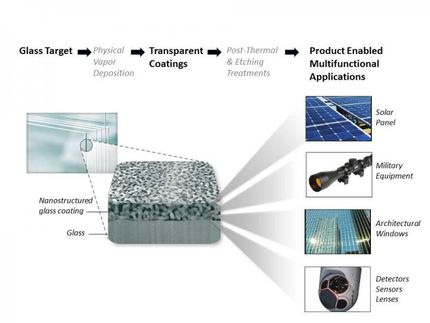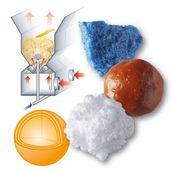Rapid etching X-rayed: Physicists unveil processes during fast chemical dissolution
Advertisement
A breakthrough in the study of chemical reactions during etching and coating of materials was achieved by a research group headed by Kiel physicist, Professor Olaf Magnussen. The team from the Christian-Albrechts-Universität zu Kiel (CAU), Germany, in collaboration with staff from the European synchrotron radiation Facility (ESRF) in Grenoble, France, have uncovered for the first time just what happens in manufacturing processes, used for the formation of metal contacts thinner than a human hair in modern consumer electronics, such as flat-screen television.
For their research the scientists used the intense X-ray radiation of the experimental station ID32, one of the ESRF's instruments. The X-ray beam was directed onto a gold surface while it dissolved in diluted hydrochloric acid. Because the reflected X-rays are sensitive to tiny changes in the atomic arrangement at the material's surface, the metal removal during the reaction can be precisely measured. "Such studies were only possible during very slow changes of the material so far", Olaf Magnussen explains. To gain insight into the fast reactions going on in industrially employed processes the speed of the measurements had to be increased more than a hundredfold. Even during very fast etching the removal of the metal proceeded very uniformly. "The material dissolves quasi atomic layer by atomic layer, without formation of deeper holes", Magnussen remarks. In a similar way, the team could follow the attachment of atoms during the chemical coating of materials.
Among the diverse industrial applications of chemical etching and coating are high-tech manufacturing processes, for example in the production of electronic devices. These require precisely controlled reactions. In order to optimize such etching and coating processes they are intensely studied worldwide. Until now it was only possible to analyse the finished product. With the method developed by the scientists, changes within a few thousandth seconds may be detected so that the reactions at the material's surface can be tracked on the atomic scale under realistic conditions.
Original publication
F. Golks, K. Krug, Y. Gründer, J. Zegenhagen, J. Stettner, O. Magnussen: "High-speed in situ surface X-ray diffraction studies of the electrochemical dissolution of Au(001)."; Journal of the American Chemical Society 2010, 133, 3772.




























































